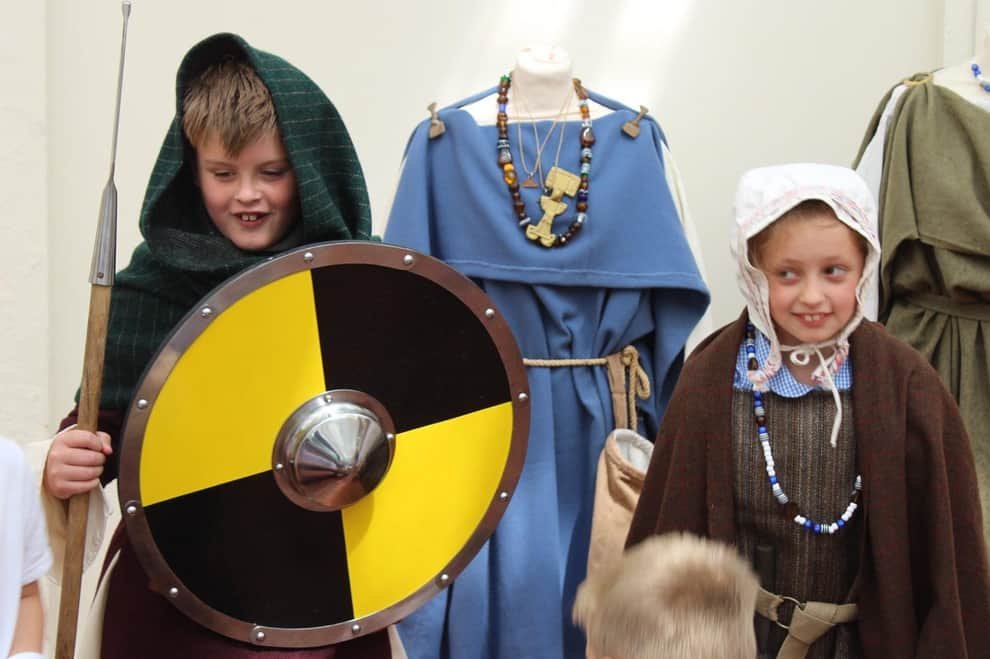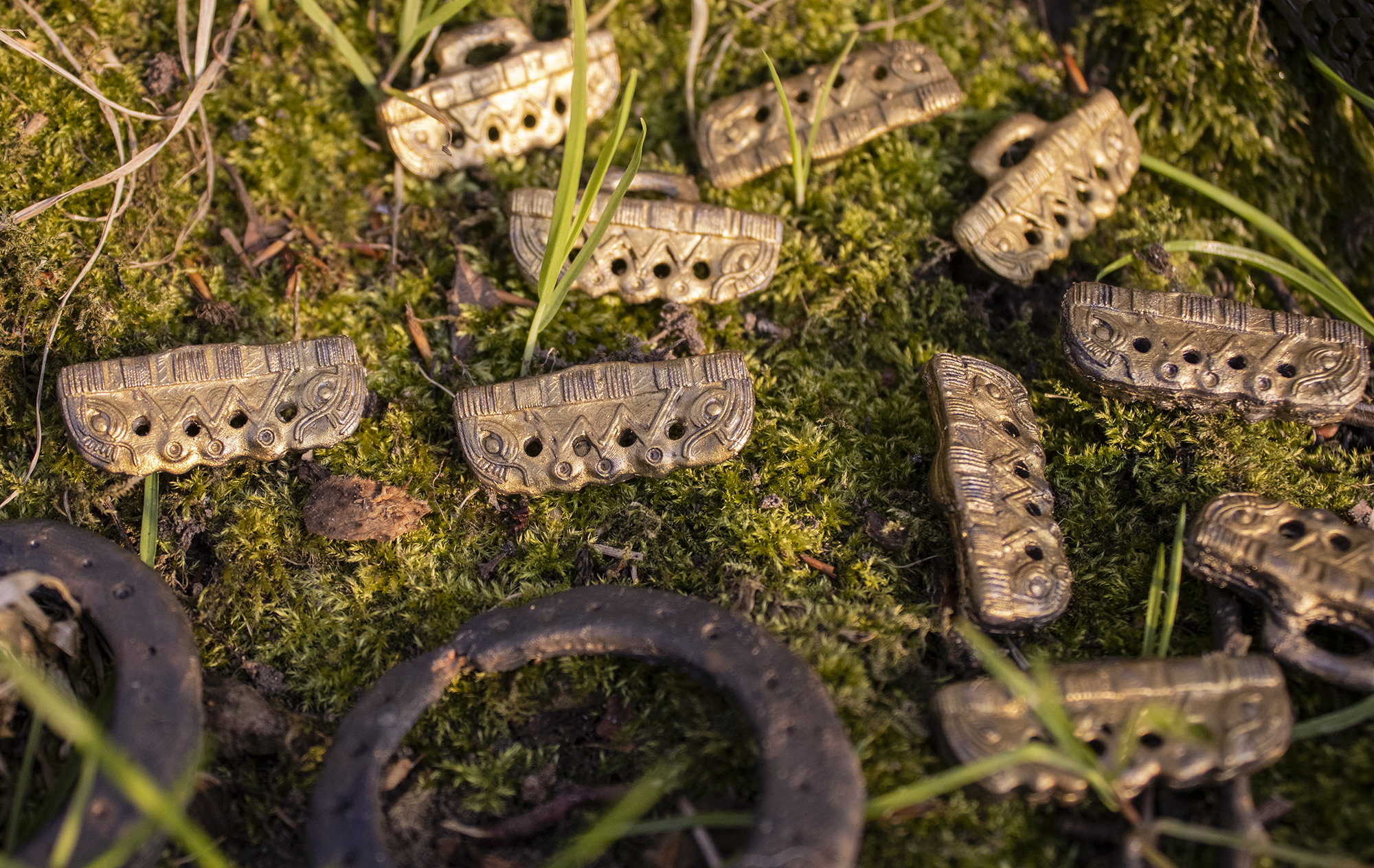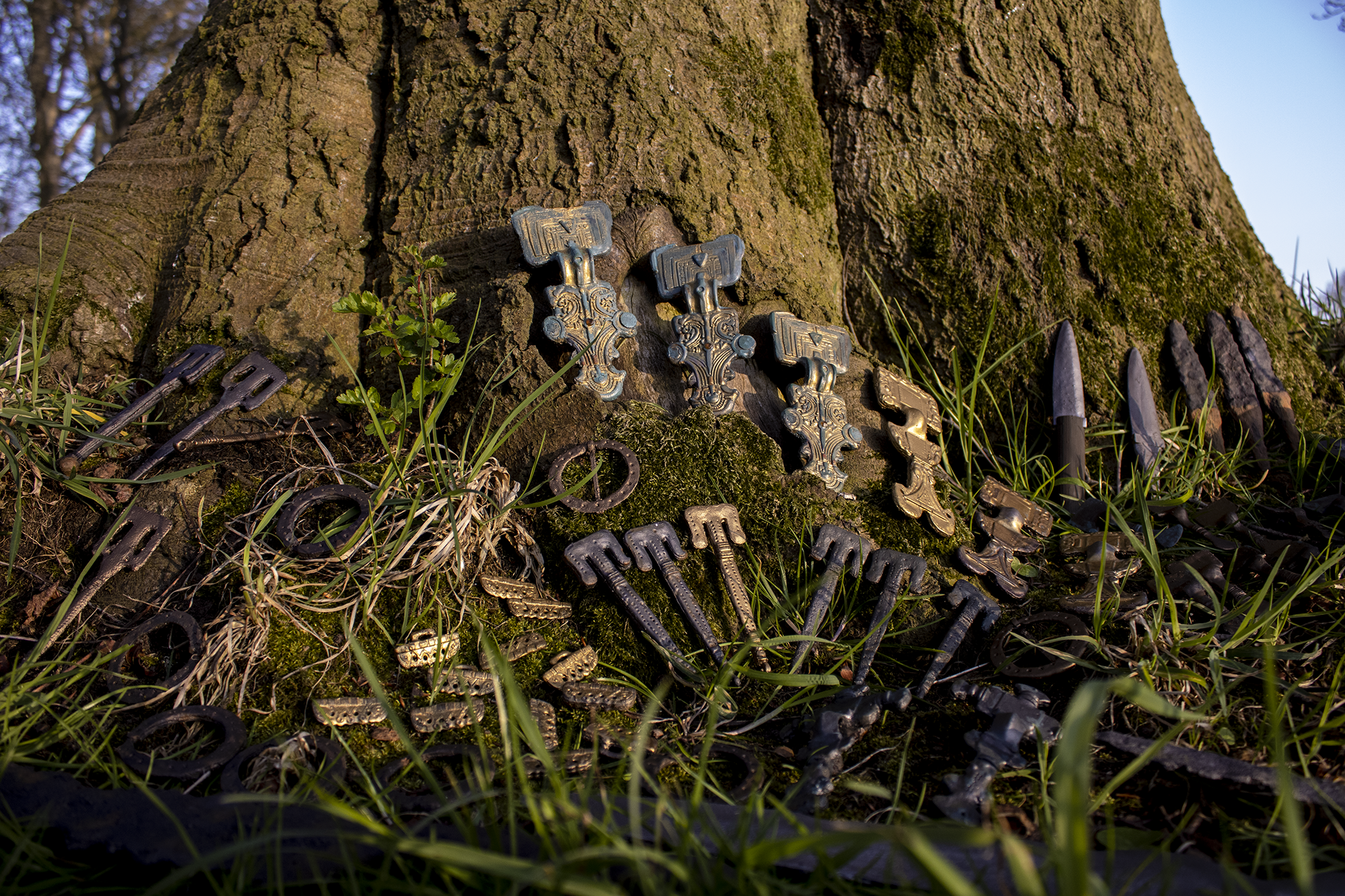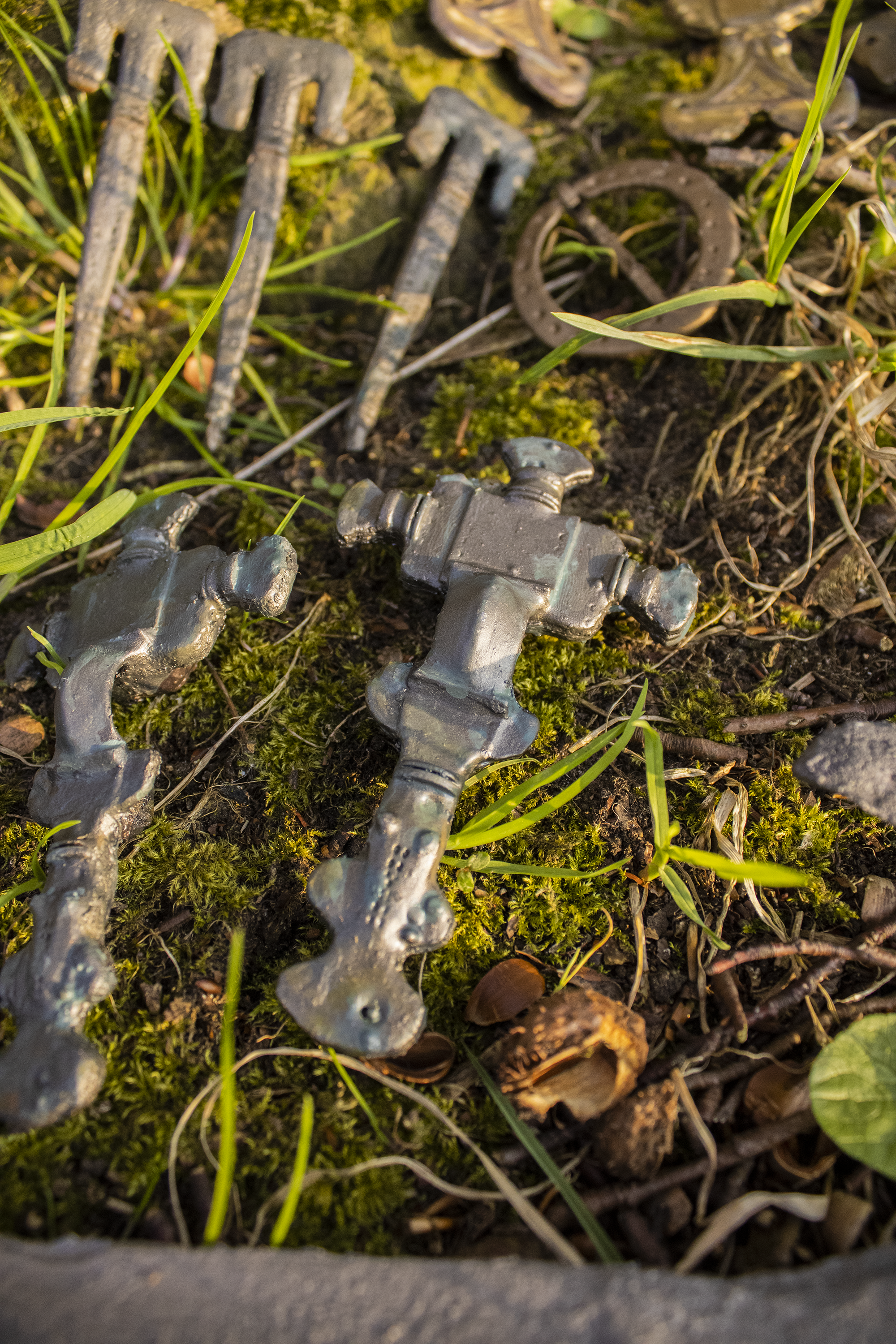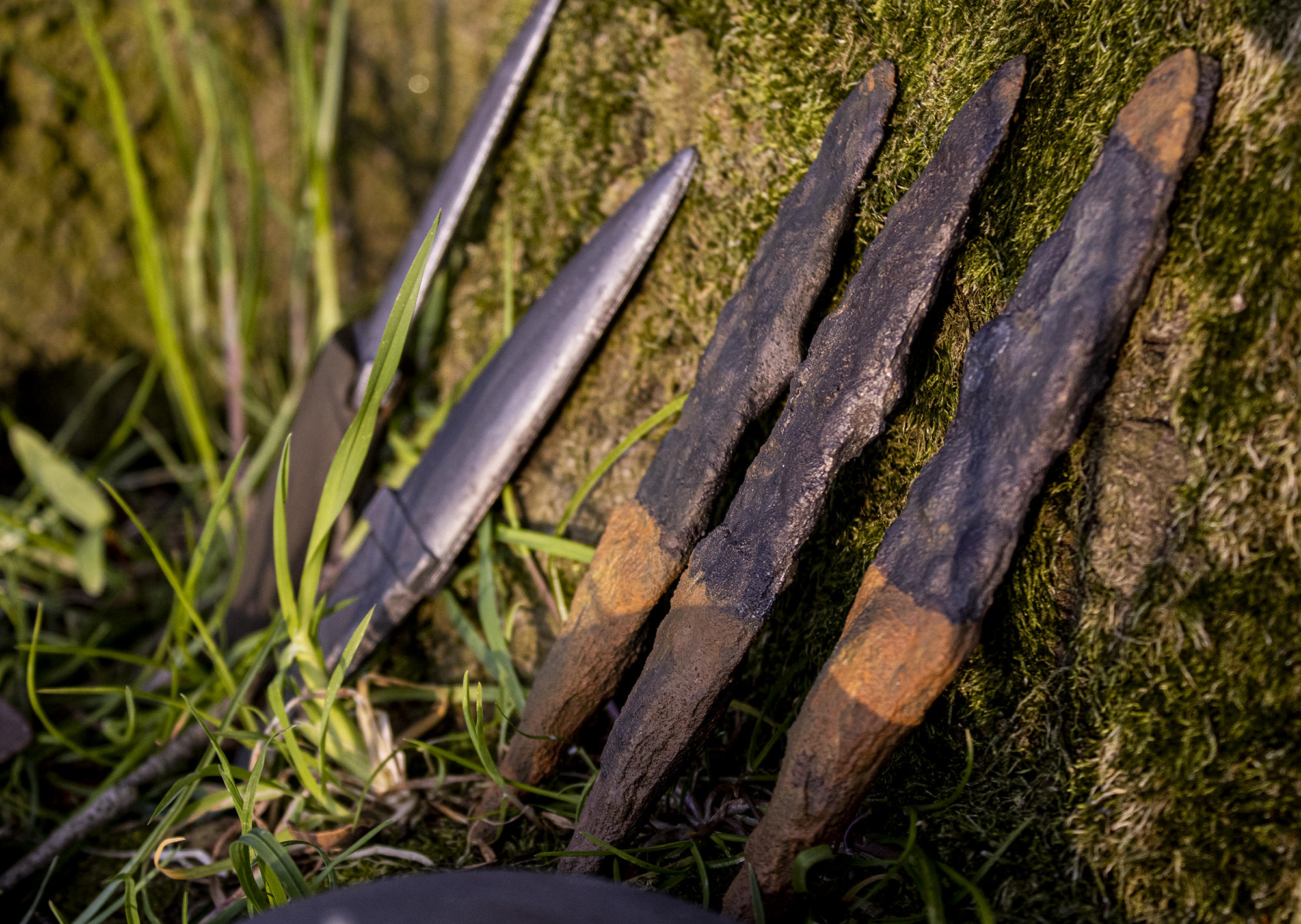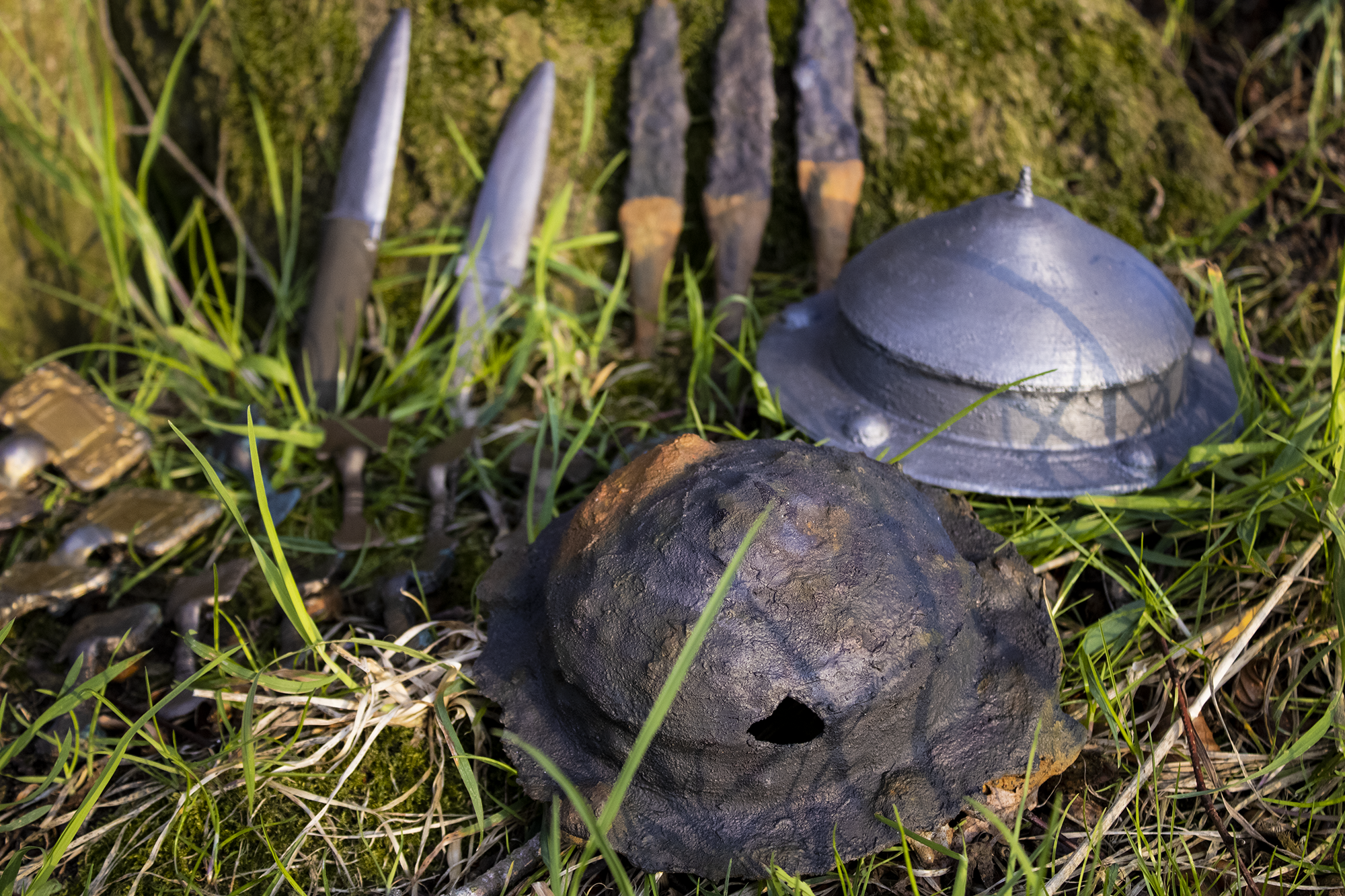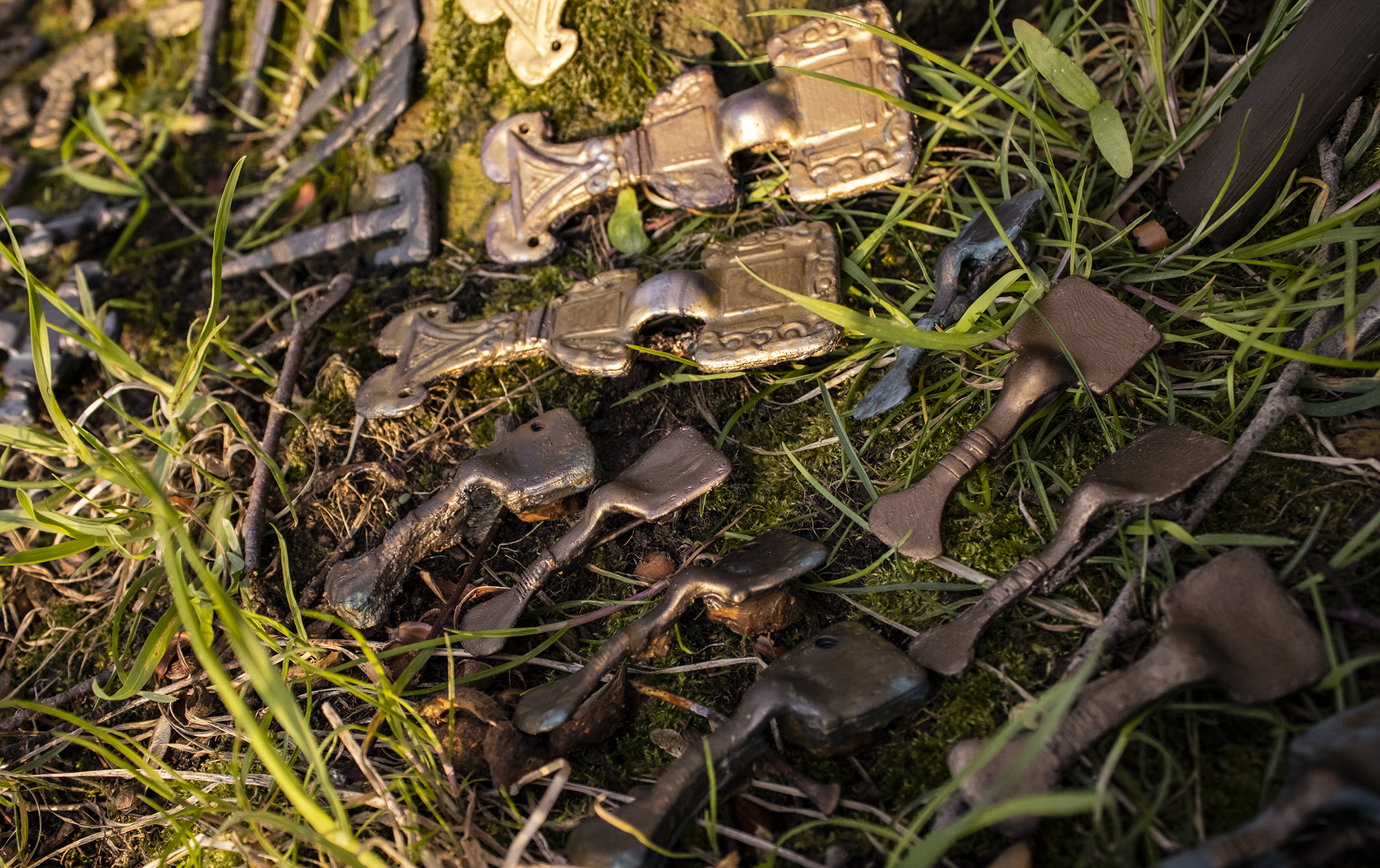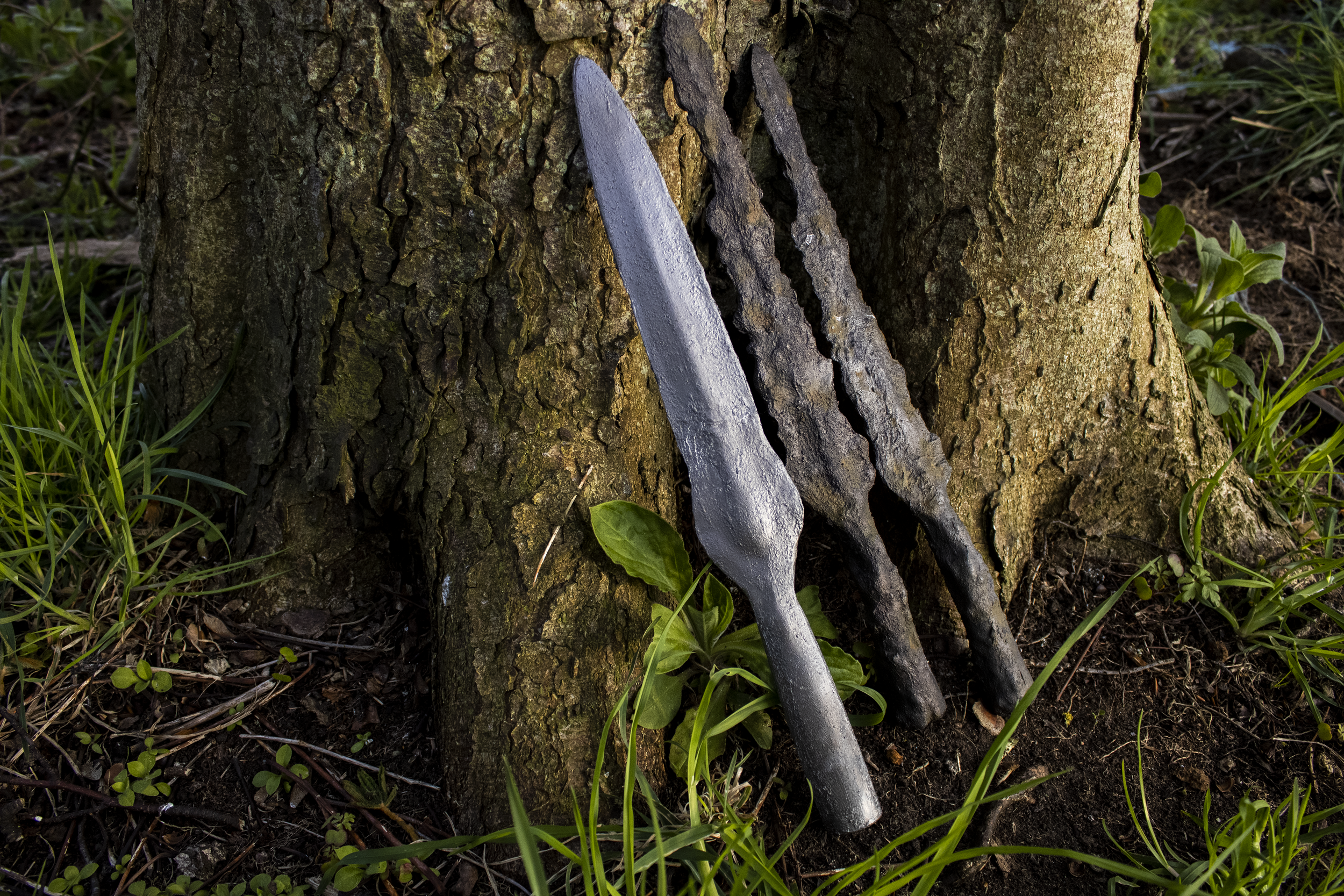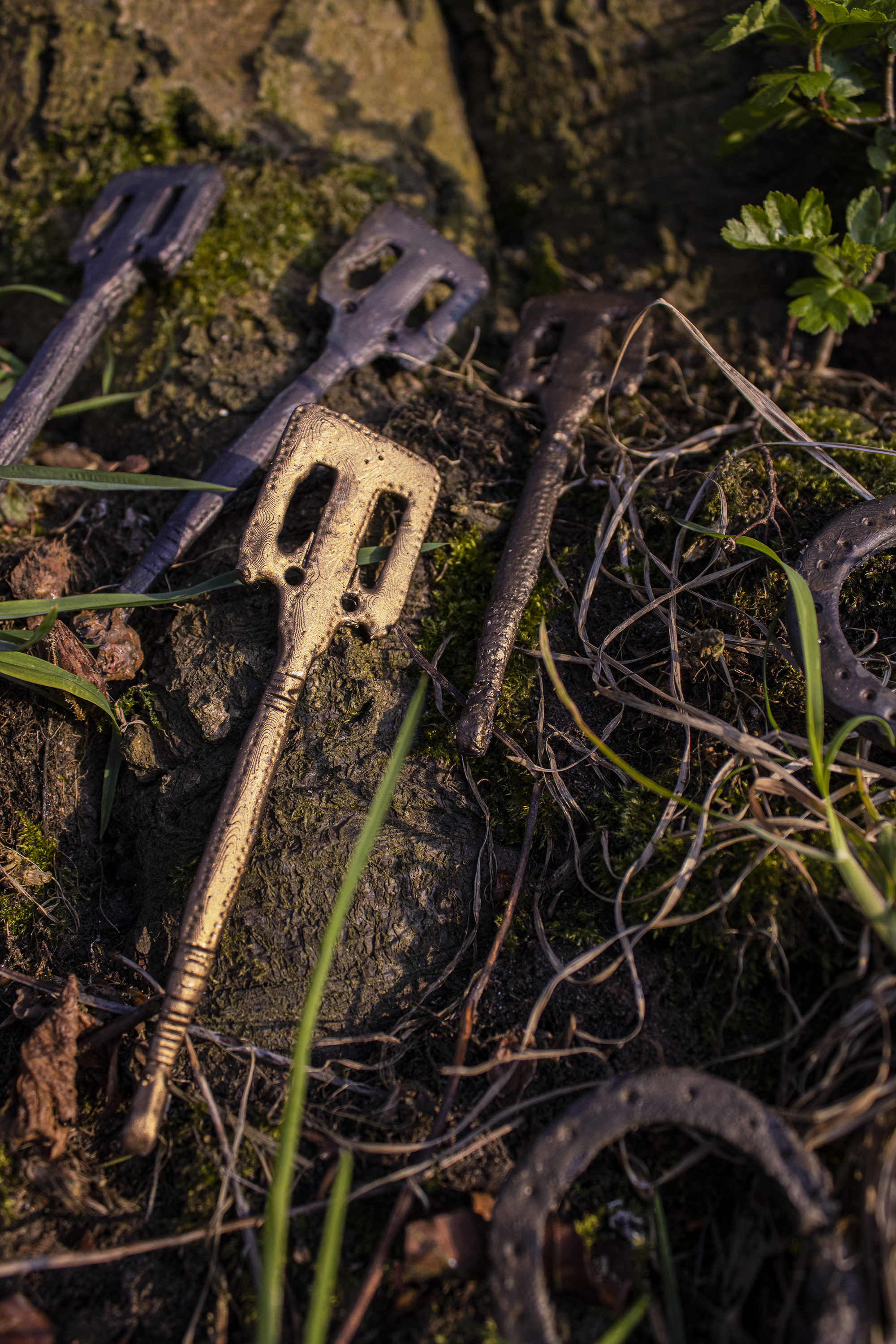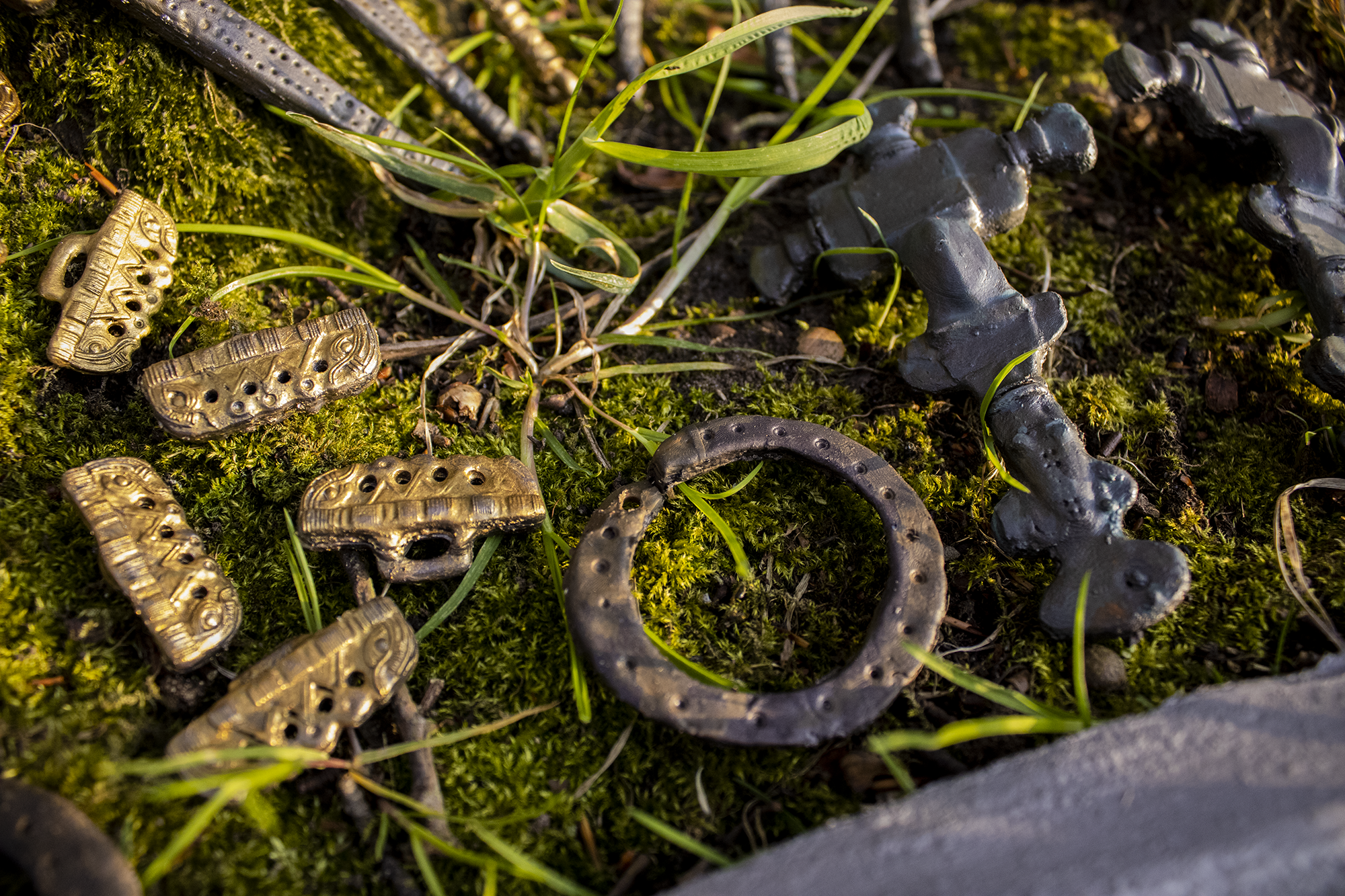Anglo-Saxon Grave-Goods: 3D Printing the Past
This is an exciting story of local history, possible witchcraft, modern technology, and connecting a new generation with our ancestors.
Sewerby Village - the place Chapel Prints is currently based - has a long history. An Anglo-Saxon cemetery dating to the 6th-7th century was unearthed at the edge of the hall’s grounds; a quiet sea-set place where holly and yew trees shelter under sycamore and beech. These people were pagans worshiping Thunor and Woden, Frigg and Eostre.
Some of the items we got to handle.
Gold gilded cuffs served to secure the sleaves, while girdle hangers were worn from the belt as decrotive pieces.
Various graves were discovered in the initial dig in the 50's and then further remains and artefacts were unearth in a follow up dig in the 70's. Spear heads, Shield Bosses, knifes, brooches and jewellery were among the finds.
More grave-goods.
Below: spot the original from the 3D prints.
Grave 41 and 49 were particularly intriguing; here two bodies were discovered in the same grave. The first found under a kern of stones, was that of an older woman with simple brooches of non-precious mental. The arrangement of the body and the fact a heavy quern stone was placed on her back point towards a live burial. The body below was of a young woman seemly of a high status, with gold gilded cuff fasteners and brooch, as well as glass and amber beads and girdle hangers signifying wealth.
Various theories have been proposed, but perhaps the most intriguing involves witchcraft. Murderers were executed if they could not pay a weregild, and live slave burials weren't a paticularly known practise among the Anglo-Saxons. However, it is thought witches were buried alive. Also the pile of stones above the grave point towards a troubled burial, a measure to try keep the spirit from rising to the world of the living. Perhaps they thought this young lady died from a curse or hex and this brutal ceremony was the resolution?
In winter/spring 2022 Robert Chester education officer at Sewerby Hall emailed us regarding whether we could produce replicas of some of the grave-goods. He had a few items in mind but particularly those found in grave 49 of the Sewerby cemetery.
We scanned in 13 items this included cuffs, brooches, girdle hangers (key-like decorations), a knife, a spear head and a shield boss. The honour of handling the original items which once adorned the people who lived here more than a thousand years ago wasn't lost on us.
We used a structured light scanner over two sessions to gather the data. We also had some of the original records from the dig. Editing the digital models took some time, a few of the pieces required the data from more than ten scans each had to be carefully edited and aligned. After about 70 man hours editing the models we had a set of digital replicas (available here to view and download). And so we were ready to start printing!
We used PLA extruded from an FDM machine initially to produce the prototypes. However, some pieces were too detailed to produce faithfully using these machines. We turned to resin printing for the jewellery pieces. We inserted metal weights to try replicate the feel of the replicas, then a very detailed paint job with textured finishes and satin varnishes to make them look as realistic as possible.
Compare the original to the 3D printed replica; left to right.
Compare the original to the 3D printed replica; right to left
We used seaglass to give the impression of the garnet set in the centre.
Robert was rather happy with our efforts and the quality of the pieces and is using them as part of a school workshop to bring the Anglo-Saxons to life for the children of the region. It sees the kids dress as our ancestors, as well as observe and reconstruct a replica of grave 49. We were also commissioned to produce some replicas to appear as they looked in the time of the Anglo-Saxons. In all we printed around 70 items for the project.
Image of some of our replicas in use; from Sewerby Hall. Note the spear head, brooch, fasteners produced by Chaple Prints.
What struck me in undertaking this project was the connection to the individuals who lived all those years ago. I know the coast and forests of this bay much like they did, I have likely walked paths they walked. The earth secreted way their bodies, their precious belongings, their strange stories for well over a thousand years. I found myself using technology I don't quite understand, and they would have seen as witchcraft. This to bring them back to life in the imaginations of children.
It was a unique opportunity for me to connect to history. To breathe life to an old story.















